None But Curious - A Podcast for Nones and Agnostics
In a world that often pressures you to choose between being Christian, atheist, or religious, the journey of being a none, agnostic or spiritual but not religious can feel isolating. None but Curious explores the unique path of nones, agnostics, and spiritual but not religious, blending science, logic, and awe-inspiring moments that go beyond traditional explanations. The community offers valuable insights for those questioning beliefs like the Bible, church teachings, and organized religion. This channel is a resource for people who don’t fit into rigid categories, providing thoughtful discussions and tools to navigate life’s deeper meaning. A new podcast episode is uploaded every two weeks! #nonebutcurious #findmagicinthemundane #awedinary
Episodes
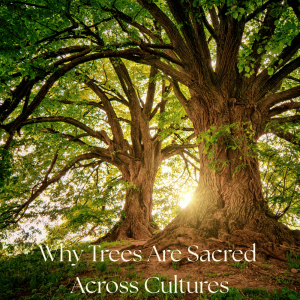
Wednesday May 07, 2025
Wednesday May 07, 2025
What you'll discover in this episode:
Trees as Bridges Between Worlds
Many cultures saw trees as cosmic connectors—linking the heavens, earth, and underworld
Roots represent the mysteries of the underworld, trunks the material world, and branches the divine or celestial realms
Trees as Givers of Life and Wisdom
Trees provide food, shelter, medicine, and shade, making them vital to early societies
Their seasonal cycles mirror the human journey: birth, growth, death, and renewal
Across cultures, trees became metaphors for resilience, patience, and inner stillness
Sacred Trees Around the World
Yggdrasil (Norse mythology): Connects nine realms, inhabited by cosmic creatures, nourished by sacred wells
The Bodhi Tree (Buddhism): Site of the Buddha’s enlightenment, symbolizing stillness and truth
The Tree of Life (Abrahamic faiths): Symbol of eternal life, divine wisdom, and spiritual potential
Mesopotamian Sacred Trees: Often linked to deities like Inanna and Ishtar, representing divine order
Crann Bethadh (Celtic tradition): Tree of life as spiritual center of villages, embodying balance and harmony
Trees as Living Symbols in the Modern World
Sacred groves in West Africa, India, and the Pacific Islands are still protected for spiritual and ecological reasons
The Chipko movement (India, 1970s): Villagers hugged trees to prevent logging—fusing spiritual tradition with activism
Practices like forest bathing (shinrin-yoku) and urban reforestation show how ancient reverence meets modern ecology
Reflections for the Spiritually Curious
Trees teach us about interconnection—underground root systems form a “wood wide web” of communication and support
They grow slowly and persistently, reminding us to embrace long-term thinking over instant results
Trees give back to the earth—offering a model for balanced living and reciprocal relationships
Big Questions to Consider:
Why have humans across cultures turned to trees to symbolize the sacred?
What might it look like to live more like a tree—rooted, connected, and quietly growing?
Can ancient stories of sacred trees offer guidance for modern spiritual and ecological challenges?
Perfect for You If You're:
Spiritually agnostic, questioning, or curious
Interested in mythology, ecology, or cultural storytelling
Looking for thoughtful, grounded inspiration from the natural world
Tune in to explore how sacred trees are more than myth—they’re metaphors for how we live, grow, and connect.If this episode resonates with you:
Subscribe to None But Curious
Share it with someone who finds beauty in big questions
Or go sit under a tree for a while—you might be surprised what it teaches you
Until next time—stay curious.
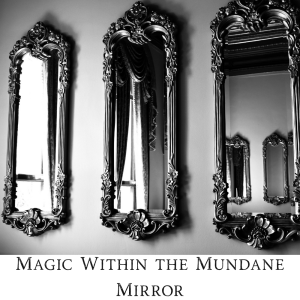
Thursday Apr 24, 2025
Thursday Apr 24, 2025
In this episode, we dive into the mysterious, magical, and meaningful world of mirrors—those everyday objects that reflect so much more than just our faces.
What you’ll hear in this episode:
Art & Visuals:
Rob Mulholland’s mirrored forest figures
Magritte’s surreal self-reflection
Jonty Hurwitz’s optical illusions
Literature & Poetry:
Alice’s journey Through the Looking Glass
Sylvia Plath’s chilling poem Mirror
Fairy tales and the truth-telling magic of mirrors
Music & Lyrics:
Michael Jackson’s call to change in Man in the Mirror
Lil Wayne’s introspection and duality
Arcade Fire, Justin Timberlake, and the emotional mirror metaphor
Nature’s Mirrors:
Still lakes like Lake Matheson
Cuttlefish and jewel beetles using reflective camouflage
Spiritual & Cultural Symbolism:
Mirrors in Buddhism, Hinduism, Shinto, Christianity, and Islam
Rumi’s heart-as-mirror metaphor
Feng Shui and mirror superstitions
Modern Reflections:
Mirrors in tech: selfies, smart mirrors, and digital identity
Mirror therapy and neuroscience
The mirror as a metaphor for self-awareness and transformation
What do mirrors reveal—about you, your beliefs, your fears, and your hopes?
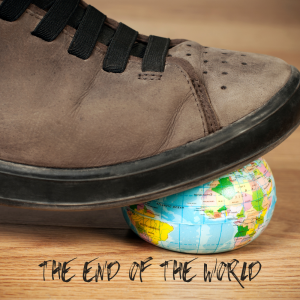
Friday Apr 11, 2025
Friday Apr 11, 2025
How do we make sense of endings—personal, global, spiritual? In this episode of the None But Curious Podcast, we explore one of the most enduring and dramatic themes in human storytelling: apocalyptic myths.
Across cultures and centuries, we've told stories about how the world might end. But these tales aren't just about destruction—they're about renewal, moral reckoning, and transformation.
In this episode, we cover:
Why stories of the apocalypse appear in nearly every culture
Common themes in end-of-world myths: destruction, rebirth, and cosmic justice
The Norse myth of Ragnarok and its cycle of fire, frost, and renewal
The Hindu concept of Kali Yuga, a dark age leading to restoration
The Christian vision in the Book of Revelation, from chaos to the New Jerusalem
How these myths reflect societal fears and hopes—then and now
What apocalyptic stories can teach us about personal change, identity shifts, and transformation
A reflection on how we each face endings in our own lives
These aren't just ancient stories. They're mirrors—offering insight into how we understand loss, change, and what's possible after everything falls apart.
Whether you're spiritual, agnostic, or just deeply curious, this episode is a powerful reminder that endings are also beginnings.
www.nonebutcurious.org
@nonebutcurious on your favorite social media

Thursday Mar 27, 2025
Thursday Mar 27, 2025
In this episode, we explore the toothbrush, an everyday object with surprising cultural, artistic, and spiritual significance. From its depiction in visual arts, like Khadija Saye’s toothbrush tree and Claes Oldenburg’s oversized sculptures, to its presence in literature—T.S. Eliot’s poetry, Alan Gratz’s Prisoner B-3087, and Sarah Kay’s metaphorical love poem—the toothbrush represents more than just hygiene.
We discuss its role in music, from DNCE’s pop hit to experimental soundscapes, and dive into spiritual traditions, including the miswak in Islam, neem twigs in Hindu practices, and purification rituals in Shinto and Buddhism.
If you love uncovering the magic of the mundane, subscribe, share, and stay awedinary!
www.nonebutcurious.org
@nonebutcurious on social media
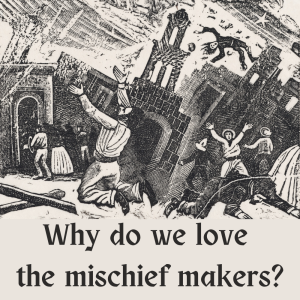
Wednesday Mar 12, 2025
Wednesday Mar 12, 2025
If you've ever questioned the rules, bent them just a little, or wondered what lies beyond the expected, this episode is for you.
Today, we step into the unpredictable world of Tricksters—the characters who thrive on mischief, break the rules, and force us to see the world in new ways. Found in myths across cultures, these figures walk the line between chaos and wisdom, laughter and disruption. They remind us that change often begins with a well-placed question—or a clever trick.
In this episode, we unravel the stories of three legendary Tricksters:🔥 Loki – The Norse god of mischief whose antics both shape and doom the gods of Asgard. Get more in-depth information about Loki here🕷️ Anansi – The clever spider of African folklore, whose hunger for wisdom takes an unexpected turn. Here are some more stories about Anansi🐺 Coyote – The cunning figure of Native American tradition, who steals fire to bring light to humanity. Read about the roles coyote plays in stories from various tribes
But Tricksters aren’t just characters from old stories—they’re everywhere. From the Joker and Deadpool to modern-day comedians and rebels who challenge the status quo, Tricksters continue to shape culture, art, and even our own personal transformations.
So why are we drawn to them? Maybe it’s because, deep down, we all have a bit of the Trickster in us—the part that questions, disrupts, and searches for something beyond the ordinary.
Join me as we uncover the wisdom hidden in their mischief. And be sure to ask yourself:What rules in your life are worth questioning?
Where could a little trickster energy lead to transformation?
If you enjoy the episode, don’t forget to subscribe, share, and drop your thoughts in the comments. Stay curious, stay bold, and maybe… stir up a little mischief of your own.
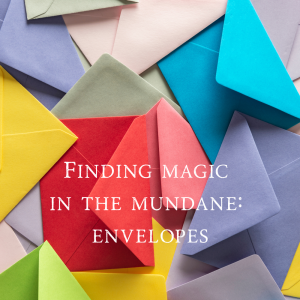
Tuesday Feb 25, 2025
Tuesday Feb 25, 2025
Envelopes—simple, everyday objects, yet packed with symbolism. They represent communication, mystery, protection, and transformation. But did you know they’ve influenced art, literature, music, nature, and culture in profound ways?
From ancient Babylonian clay coverings to modern postage, envelopes have evolved to safeguard secrets and stories.
Artists like Sarah Nicole Phillips and Mark Powell repurpose envelopes into stunning works of art.
Literature uses envelopes to drive narratives, from Edgar Allan Poe’s The Purloined Letter to Margaret Atwood’s The Handmaid’s Tale.
In music, envelopes symbolize love, secrecy, and even boundary-pushing creativity.
Even nature has its own versions—viral envelopes, cocoons, and fungi spores, all designed for survival and transformation.Across cultures, envelopes play vital roles—from Japan’s shugi-bukuro to China’s hóngbāo, carrying messages of luck, mourning, and celebration.
Next time you hold an envelope, think beyond the paper—it's a vessel of history, art, and human connection.
✨ Subscribe for more explorations into the magic of everyday objects! ✨
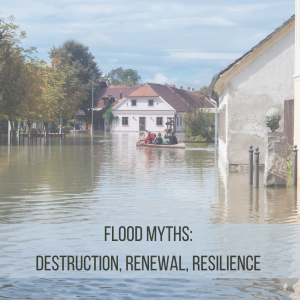
Wednesday Feb 12, 2025
Wednesday Feb 12, 2025
Welcome back to None But Curious! Can you believe it’s 2025? We’re kicking off Season 3 with an episode that dives deep—literally—into the flood myths that have shaped human storytelling across cultures and time. From ancient Mesopotamia to China, from the Bible to Hindu mythology, flood narratives have long been a powerful way for humanity to explore destruction, renewal, and resilience.
Why Do So Many Cultures Have Flood Myths?
Flood myths are a recurring theme in global storytelling. Whether in the Epic of Gilgamesh, the story of Noah’s Ark, the tale of Manu in Hindu tradition, or China’s Gun-Yu myth, these stories share striking similarities. Water has always been a force of nature that both nurtures life and wipes the slate clean, offering the possibility of renewal.
These myths often share a structure:
A civilization or people face divine judgment or natural catastrophe.
A chosen individual is warned and builds an ark, ship, or refuge.
The flood destroys the old world.
The survivor(s) begin anew, often with a divine covenant or blessing.
It’s fascinating to see how different cultures interpreted these stories and what they reveal about human nature.
Comparing the Myths
The Epic of Gilgamesh (Ancient Mesopotamia)
One of the earliest flood myths appears in the Epic of Gilgamesh. The god Enlil, irritated by humanity’s noise, decides to wipe them out with a great flood. However, the wise god Ea warns a righteous man, Utnapishtim, instructing him to build a massive ship. He gathers his family, animals, and seeds of all plants. The storm rages for seven days and nights, and when it ends, Utnapishtim sends out birds to find dry land. The gods, impressed by his devotion, grant him immortality.
Noah’s Ark (The Bible)
A well-known parallel is found in Genesis. God, seeing the corruption of humanity, instructs Noah to build an ark and take pairs of animals to survive a coming flood. For 40 days and 40 nights, the rains pour, wiping out life except for those aboard the ark. After the flood, Noah releases a dove, which returns with an olive branch, signaling land. God then makes a covenant with Noah, marking the sky with a rainbow as a promise never to flood the earth again.
Manu and the Fish (Hindu Mythology)
In Hindu tradition, the flood myth revolves around Manu, a wise man who is warned by the god Vishnu, appearing as a small fish. Vishnu tells Manu to build a boat and gather seeds and animals. As the floodwaters rise, the fish grows larger, guiding Manu’s boat to safety in the Himalayas. After the flood, Manu repopulates the world with the creatures and seeds he saved.
The Great Flood of China (Gun-Yu Myth)
In Chinese mythology, a great flood threatened civilization for generations. The emperor called upon Gun, who attempted to control the waters with magical soil but ultimately failed. His son, Yu, took a different approach. Instead of blocking the waters, he worked with them, carving out canals and irrigation systems to redirect the flood. His efforts were successful, and Yu became a legendary ruler, symbolizing resilience and adaptation.
Could These Myths Be Based on Real Events?
Some scientists believe these myths might have been inspired by actual floods. The Black Sea Deluge Hypothesis suggests a massive flood occurred around 7,500 years ago, submerging settlements along the Black Sea. Similarly, an ancient flood in China around 1920 BCE might have inspired the Gun-Yu myth.
Floods are common natural disasters, and ancient societies may have preserved their experiences through storytelling, blending history with mythology.
Cultural Exchange and the Evolution of Myths
Ancient travelers and traders didn’t just exchange goods—they also shared stories. The similarities between flood myths suggest that as people moved, they carried these tales with them, adapting them to their own cultures. It’s like history’s oldest game of telephone, where the core story remains, but details shift.
Flood Myths as Symbols of Renewal
Flood myths are about more than destruction—they are about hope and second chances. They remind us that even after catastrophe, there is an opportunity to rebuild. They teach resilience, morality, and the importance of working in harmony with nature.
Final Thoughts
So, why do flood myths continue to captivate us? Perhaps because they tap into a universal human experience—the fear of loss, the struggle for survival, and the hope for renewal. In a world still shaped by natural disasters, these ancient stories continue to hold meaning, reminding us that even after the storm, there’s a chance to begin again.
If you enjoyed this episode, don’t forget to like, comment, and subscribe to None But Curious for more explorations of mythology, history, and the awe in the ordinary!
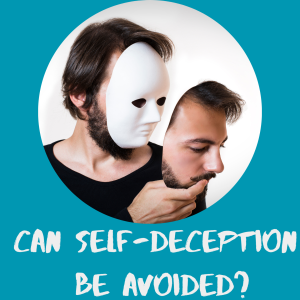
Friday Oct 11, 2024
Friday Oct 11, 2024
Welcome to the final episode of Season Two, where we dive into the complex world of self-deception. In this episode, we explore the features of self-deception, from its definition to the neuroscience behind it, and discuss its implications on our personal experiences and community interactions.
Episode Overview:
Join us as we unpack the idea of self-deception, which occurs when individuals unconsciously convince themselves of beliefs that contradict objective reality. Unlike outright lying, self-deception can be insidious, as the deceiver and the deceived are often the same person. Philosopher Jean-Paul Sartre referred to this phenomenon as "bad faith," where individuals evade uncomfortable truths by creating a false reality. This episode invites listeners to reflect on their own experiences and recognize how self-deception manifests in everyday life.
What You’ll Learn:
Defining Self-Deception: We start by defining what self-deception is and how it can manifest in our lives through denial of facts, cognitive distortions, and selective memory. You’ll learn about the psychological complexities of self-deception and how it operates unconsciously, making it difficult to detect.
The Neuroscience of Self-Deception: Explore the role of dopamine, the neurotransmitter associated with pleasure and motivation, in shaping our beliefs. We discuss how dopamine influences our attention and perception, leading us to downplay negative information in favor of what feels good.
Impact on Personal Experiences: Understand how self-deception alters our perceptions and decisions, affecting our relationships and ability to connect meaningfully with others. We discuss real-life examples that illustrate how self-deception can lead to misunderstandings and resentment in personal and professional settings.
Self-Deception in Society: Learn about the broader societal implications of self-deception, including how it contributes to groupthink and moral blindness. We delve into case studies, such as the Theranos scandal, to highlight the dangers of self-deception in leadership and organizational ethics.
Practical Strategies for Overcoming Self-Deception: Finally, we provide listeners with actionable strategies to recognize and address self-deceptive tendencies. From mindfulness and meditation to Cognitive Behavioral Therapy (CBT) and journaling, these tools can help individuals cultivate self-awareness and foster open, honest conversations.
Key Takeaways:
Self-deception can significantly impact our decision-making, relationships, and moral compass.
Recognizing and challenging self-deceptive patterns is crucial for personal growth and community building.
Practical strategies like mindfulness, CBT, and reflective journaling can help combat self-deception.
Conclusion:
As we wrap up Season Two, we encourage listeners to reflect on their own experiences with self-deception and to embrace the discomfort that comes with confronting reality. This episode serves as a reminder that change begins with self-awareness and that taking the time to engage with our thoughts and feelings is essential for personal growth.
Don’t forget to follow us on our social media platforms—Facebook, TikTok, Instagram, and YouTube (all are @nonebutcurious)
Visit our website at nonebutcurious.org for more resources and subscribe to our monthly newsletter to stay updated on future projects.
Remember, it's okay to take a step back and prioritize your well-being, especially in times of uncertainty. Embrace the journey of self-discovery and give yourself permission to explore life outside of your comfort zone.

Thursday Sep 26, 2024
Thursday Sep 26, 2024
Welcome to this episode of the None But Curious podcast! In this month's journey, we lace up and step into the fascinating world of shoes, diving deep into their significance across art, music, literature, and even the natural world. From the prehistoric leather shoes of early humans to the glass slippers of fairy tales, we explore how footwear has evolved to reflect cultural values, societal norms, and personal identity.
The History and Evolution of Shoes
Shoes are more than just functional—they're a reflection of humanity's journey. In this episode, we discuss:
Prehistoric Footwear: Did you know the oldest known leather shoe is over 5,500 years old? Found in Armenia, it showcases early human ingenuity in crafting practical footwear.
Ancient Egypt and Greece: In ancient Egypt, sandals were a status symbol. Pharaohs’ sandals were adorned with precious stones, while the poor often went barefoot. Greek and Roman civilizations used shoes as symbols of power and comfort, from the hobnailed boots of Roman soldiers to the elegant Greek sandals.
The Middle Ages: The poulaine, a long-pointed shoe, became popular among European aristocracy. These shoes, stuffed with wool and often highly decorated, symbolized wealth and social standing.
Shoes in Art: From Van Gogh to Jeff Muhs
Shoes have appeared in art as powerful symbols of identity, resilience, and societal roles.
Vincent van Gogh's "A Pair of Shoes": Van Gogh painted a pair of worn-out boots that symbolized the working class, conveying a deep sense of perseverance and struggle.
Jeff Muhs' "Decommissioned Shoe": A striking piece where a high heel is encased in concrete, Moos explores the tension between femininity and societal expectations.
Mona Hatoum's Performance Still: Hatoum walked through London dragging boots tied to her ankles, creating a visual metaphor for the weight of societal pressure on personal freedom.
Shoes in Music: From Elvis to Macklemore
Shoes have been used to symbolize freedom, rebellion, and personal expression in music.
Elvis Presley’s "Blue Suede Shoes": Originally by Carl Perkins, the song became iconic, symbolizing post-war youth culture and individualism.
Nancy Sinatra’s "These Boots Are Made for Walkin'": A feminist anthem that represented empowerment and independence in the 1960s.
Macklemore’s "Wings": A modern take on consumer culture, this song reflects the social pressure of brand-name sneakers like Nike and the desire for status.
Shoes in Literature: Cinderella and The Wizard of Oz
Footwear holds rich symbolism in literature:
Cinderella’s Glass Slippers: These iconic shoes symbolize purity, identity, and the magical transformation central to the story.
Dorothy’s Ruby Slippers in "The Wizard of Oz": In the original book, Dorothy’s silver shoes (changed to ruby in the film) symbolize inner strength and the journey toward self-reliance.
Nature’s Footwear: Lady Slipper Orchids and Slipper Lobsters
Even in nature, we find "shoes" that serve unique purposes:
Lady Slipper Orchid: Named for its slipper-like shape, this orchid attracts specific pollinators and depends on a unique fungus for survival.
Slipper Lobster: With its flattened body and paddle-like antennae, this marine creature uses its form to navigate and protect itself in the ocean.
Footwear as a Cultural Symbol
From their role in society to their appearance in art, music, and literature, shoes represent much more than practicality. They tell stories about status, identity, and personal journeys. As we explore the cultural significance of footwear, we uncover insights into our human experience.
Call to Action
Love what you're hearing? Subscribe to the None But Curious podcast for more explorations of the everyday items that reveal our deepest stories. Don't forget to join our monthly newsletter for updates, episodes, and more fascinating content! Continue discovering the magic in the mundane with us.
Be sure to join our None But Curious Facebook community where we’ll share more insights and discuss the role of shoes in our own personal journeys. Let's keep the conversation going!
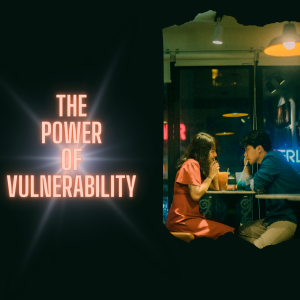
Thursday Sep 12, 2024
Thursday Sep 12, 2024
In this episode, Candy explores the concept of vulnerability and how it can lead to personal growth, deeper connections, and greater authenticity.
What You'll Learn:
Understanding Vulnerability: Discover why vulnerability can be challenging and how it’s a fundamental part of the human experience. Learn to embrace it as a path to personal growth without relying on spiritual or religious beliefs.
Mindfulness-Based Stress Reduction: Find out how MBSR can help you manage vulnerability by encouraging present-moment awareness and emotional resilience.
Cognitive Behavioral Therapy: Learn practical CBT techniques to challenge and reframe negative beliefs about vulnerability, making it easier to embrace emotional risks.
Gradual Exposure: Discover how taking small emotional risks over time can increase your tolerance for vulnerability and build confidence.
Cultivating Self-Compassion: Learn how treating yourself with kindness during vulnerable moments can shift your perspective from weakness to a normal part of the human experience.
Building Trust: Explore the importance of trust in relationships and how sharing personal aspects of yourself can deepen connections with others.
Creative Expression: See how engaging in creative projects can be a powerful way to practice vulnerability and invite feedback.
Setting Boundaries: Understand how clear boundaries and open communication can help manage emotional discomfort and vulnerability.
Emotional Agility: Discover how to use emotions as a guide for living a more fulfilling life through emotional agility.
Join us as we explore these practical methods and insights to help you embrace vulnerability, connect more deeply, and navigate life’s uncertainties with courage and self-awareness.
Don't forget to like, comment, and subscribe for more episodes on embracing life's uncertainties and finding inspiration in the unknown!








